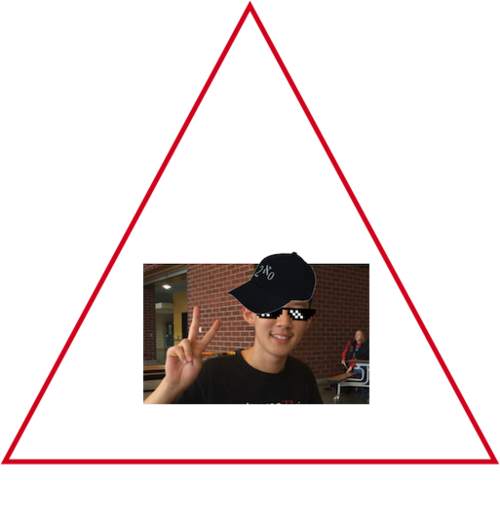The Triangular Room
 Daniel is standing in the middle of an equilateral triangle-shaped room. He wants to touch all three walls and return back to the center of the room. If the shortest distance between Daniel and a wall is
1
, then
d
is the shortest distance Daniel has to walk to complete his task. Find
d
2
.
Daniel is standing in the middle of an equilateral triangle-shaped room. He wants to touch all three walls and return back to the center of the room. If the shortest distance between Daniel and a wall is
1
, then
d
is the shortest distance Daniel has to walk to complete his task. Find
d
2
.
Details and Assumptions
Walking to a vertex of the triangular room counts as touching both walls adjacent to the vertex.
The answer is 28.
This section requires Javascript.
You are seeing this because something didn't load right. We suggest you, (a) try
refreshing the page, (b) enabling javascript if it is disabled on your browser and,
finally, (c)
loading the
non-javascript version of this page
. We're sorry about the hassle.
1 solution
It would be useful if you actually showed that the length of the reflected line segment is 2 8
pw + wv +uv+pu = 2+2root3 Can you explain ................
Using 2 different vectors from the center of one triangle to the centers of the next 3 and finding the distance of the resultant . ∣ < 2 , 0 > + < 2 c o s ( 6 0 ° ) , 2 s i n ( 6 0 ° ) > + < 2 , 0 > ∣ 2 = ( 4 + 2 ⋅ 2 1 ) 2 + ( 2 2 3 ) 2 = 2 5 + 3 = 2 8
Triangle side can be calculated as: 3 h = 2 × 3 3 a = 2 3 a = 1 ⇒ a = 2 3
The shortest route will be a line reflected. When mirror images of the room are added, the route will be segment P P 1 That segment is equal to the route through points P U V W P . Any other route (except for rotated ones) will result in a broken line with length greater then the segment P P 1 . The length of P P 1 is hypotenuse with short sides 3 h = 1 and 2 3 a = 3 3
( P P 1 ) 2 = ( 3 3 ) 2 + 1 = 2 8 For more info see Fermat's principle